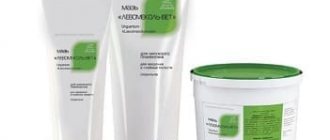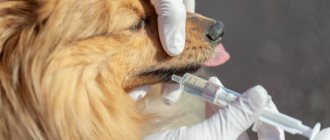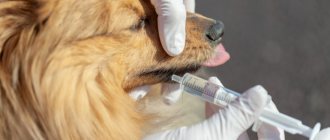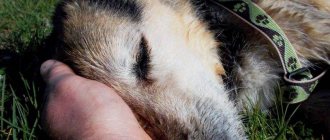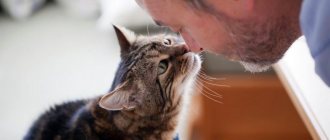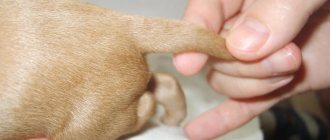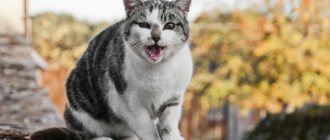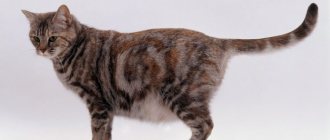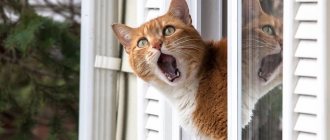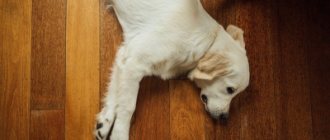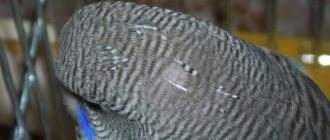It’s unlikely that anyone would argue that most people love cats. Of course, there are also dog lovers. But as statistics show, kittens and children still cause more affection.
Cats decorate our lives, making it warmer and more comfortable. They fill our home with joy and playful games; in difficult moments they can be wonderful interlocutors and listeners. Most often they get along well with children and tolerate all their pranks and jokes on them; can be both a nanny and a teacher. And on cold, cloudy and sad days, curled up on our laps, they serve us as an excellent cure for any blues.
But what can you do when suddenly something goes wrong with this sweet positivity?
What does a healthy animal look like?
The absence of health problems will be indicated by the behavior and appearance of the pet. Focus on good appetite and playfulness, as well as the condition of the coat, nose and color of mucous membranes. If the cat is not sick, then he will not refuse the offered treats and chasing the teaser rod, and will also purr with pleasure after scratching and stroking.
When assessing activity level, do not forget about individuality. Not all breeds are famous for their mobility, but you can notice changes even in mustachioed couch potatoes.
The main asset of all representatives of the cat family is their fur coat. If it shines and shimmers in the light, then there is no reason to worry. The same applies to a wet and cold nose, as well as pale pink mucous membranes of the mouth and eyes.
Obesity
Often, owners, in pursuit of providing their pet with a better quality of life, offer excessive amounts of food. The result of this is the accumulation of excess fat mass and even clinical obesity of the animal.
And although excess body weight in itself is not so terrible, it can significantly complicate the life of a pet. The fact is that the growth of adipose tissue gradually leads to changes in hormonal levels, increased stress on joints and ligaments, the cardiovascular system, and a decrease in physical endurance. Obese cats have an increased risk of developing diabetes.
In addition to the above, in overweight cats, in the event of sudden starvation (more than 2 days), the risk of developing liver lipidosis, a serious disease that can be fatal, increases many times over.
Treatment and prevention of this pathology in cats consists mainly of providing the animal with a balanced diet, the calorie content not exceeding its daily needs. Among Purina® PRO PLAN® daily foods, diets with the Optilight® complex are used to prevent the development of obesity, with reduced calorie content, but at the same time a fully balanced composition, rich in protein and fiber.
How to tell if your cat is sick: warning signs
It is quite easy to recognize illness if you know the main signs that appear in a sick cat. They are divided into physiological and behavioral.
Please note: Do not wait until all of the above to contact your veterinarian. For concern, 2 alarming symptoms are enough.
Drowsiness and lethargy
On average, mustachioed pets sleep 12-16 hours a day. Despite this, they spend most of their time dozing.
In addition to an increase in sleep duration, the disease causes less sensitive sleep and a more inhibited reaction to stimuli. A healthy cat responds with almost lightning speed to touches and sneaking up from behind, while a sick cat either ignores it or is frightened by surprise.
Another important symptom is a decrease in activity. Lethargy and indifference often go together with high fever and intoxication.
Refusal to eat, even your favorite treat
If your pet is not picky, then you will notice this sign first. Its severity depends on the severity of the condition. The cat may simply be a little undereaten with the main food, but agree to a meat stick - or flatly refuse any food, regardless of its taste.
Please note! Against the background of refusal of normal food, pica may develop - eating inedible objects: soil, filler, wallpaper.
Increase or decrease in temperature
A cat's body temperature is higher than that of a human. It is 37.5-38.9°C and depends on age. In kittens it can reach 39.5°C, as their metabolic processes work faster.
The most dangerous deviations include everything below 37°C and everything above 40°C. You can check the value using rectal measurement with an electronic or mercury thermometer.
The desire to hide
This sign is due to the instinct of self-preservation. A sick cat will try to hide in dark and confined spaces to protect itself from predators. Out of fear, she may not respond to the owner’s call and may not respond to bait with her favorite treat.
Increased aggression
The reverse version of apathy is increased aggression. It may be associated with pain and reluctance to communicate - or with disorders in the nervous system. The most dangerous cause is rabies. This disease cannot be cured and poses a danger to all family members.
Important! In addition to mood changes, rabies is accompanied by photophobia and hydrophobia, as well as increased salivation.
Meowing as a sign of pain
Loud meows, not associated with begging for food or communication, are used to express pain. The animal may meow due to painful touch, during urination, or for no obvious reason if the discomfort is already constant.
Strange pose
When feeling unwell, cats often “pull themselves up” and tuck their paws under themselves, taking the “loaf” pose. If the condition is accompanied by pain, then they constantly change their position, trying to minimize the feeling of discomfort in rather strange and unnatural positions.
Discharge from the eyes and nose, drooling
The discharge varies in abundance and consistency. The most dangerous are purulent and hemorrhagic, that is, with blood. They are characteristic of infections, injuries and tumors. Regardless of the clinical picture, this sign always indicates a disease, since natural mucous discharge is almost invisible.
Excessive salivation can be easily identified by a wet chest and deterioration in the quality of the coat. It occurs when a foreign object gets stuck in the respiratory tract, due to dental diseases, poisoning and rabies.
Digestive problems – vomiting, diarrhea or constipation
All these signs accompany intoxication, but its causes can be very diverse. Isolated cases of vomiting, diarrhea or constipation due to a change in diet are not dangerous, but frequent and prolonged cases are fraught with death from dehydration or intestinal rupture.
Foreign matter in stool or urine
In addition to stool disturbances, one should also be wary of the appearance of foreign matter: mucus, bile, blood, parasites. The same applies to changes in the color and smell of feces.
In diseases of the genitourinary system, problems with urination are observed. If stones are to blame, then the animal experiences numerous microtraumas to the mucous membranes. In addition to severe pain, this condition is characterized by blood in the urine and urination in inappropriate places.
Poor coat and/or skin condition
If your pet’s fur begins to fall out, roll into tangles, stick together into icicles, or simply loses its shine and softness, sound the alarm. All this is typical for allergies, parasitosis and other dangerous pathologies.
You shouldn’t ignore what’s underneath the fur. Too dry skin with various rashes, redness and ulcers is very far from the norm. Particularly dangerous are wounds formed due to scratching against a background of itching. Pathogenic microorganisms can penetrate them.
Loss of coordination, seizures, unsteady gait
These symptoms occur with problems with the musculoskeletal system (arthritis, injuries) and neurological disorders. If your pet rolls over on its side, drags its paws, or avoids using one of its limbs, seek help to avoid developing paralysis.
You shouldn’t hesitate even if you have cramps. One of the possible causes is an acute form of poisoning. To save the animal, it may be necessary to administer an antidote.
Breathing problems, cough
In the absence of pathologies, the cat's breathing is very quiet and almost imperceptible. On average, he takes 20-40 breaths per minute, so changes in frequency, the appearance of extraneous noise during inhalation and exhalation, as well as protruding of the tongue are considered deviations. Remember that shortness of breath, wheezing, whistling and gurgling sounds should not be ignored.
Change in mucous color
It was already said above that the only healthy color is pale pink. Its change to yellow, blue and white is a serious reason to contact the veterinarian.
Diseases of the genitourinary system
The concept of the genitourinary system means the totality of organs that form the urinary and reproductive systems: kidneys, ureters, bladder, urethra, ovaries, testes, uterus, prostate gland.
Diseases of these organs are usually manifested by a violation of their function and a demonstration of anxiety in the animal. The main specific signs of such pathologies include:
- disturbance of normal urination (from frequent to complete absence);
- pain when urinating;
- hematuria (appearance of red blood cells in the urine);
- the presence of mucus and blood on the genitals;
- frequent licking of the genitals;
- increased thirst;
- abdominal pain (pain in the abdomen).
Among the most common diseases that can manifest themselves in this way, it is worth noting kidney disease (acute and chronic renal failure), urolithiasis, inflammation of the bladder (idiopathic and infectious cystitis), inflammation of the urethra, inflammation of the uterus - endometritis.
If the above symptoms are detected, you should contact a veterinarian as soon as possible to receive qualified advice, carry out the necessary diagnostics (ultrasound, blood and urine tests) and prescribe the necessary treatment.
Controlling the animal’s fluid intake in this situation can be considered not only prevention, but also, to a certain extent, treatment. Sufficient saturation of the body with water helps to improve urine production and reduce symptoms. To maintain a cat's sufficient fluid intake, a combined type of feeding is best, which involves the daily use of dry and wet food. The use of wet food in this case helps to increase the level of moisture consumed.
The most effective ways to prevent diseases of the genitourinary system also include compliance with feeding standards. Thus, the diet must be balanced with macro- and microelements and contain sufficient amounts of vitamins and essential amino acids. These standards are fully met by Purina® PRO PLAN® cat food. Feeding cats complete Purina® PRO PLAN® diets has been proven to help maintain normal urine acidity and prevent the formation of urolithiasis. If you feed your animal non-commercial food and prepare it yourself, you should seek the advice of a professional veterinary nutritionist.
What should the owner do first?
If you notice the signs listed above and are sure that your cat is sick, give him first aid. Acceptable actions will depend on the age and condition of the patient.
Help the kitten
The kitten's body is the most vulnerable. They get sick easily and are very difficult to tolerate illness themselves. Due to weaker immunity, death from a virus or other dangerous pathogen can occur within the first day.
If your kitten is sick, do not hesitate to consult a doctor. Attempts to independently relieve symptoms will only delay his death, but will not solve the main problem. There is also a risk of aggravating the condition with improper treatment.
Helping an adult pet
The situation with an adult cat is less critical, so just go by its condition. If it is not critical, wait a couple of days to observe. For mild food poisoning and other non-dangerous causes, the problem will resolve itself.
If you suspect a head injury or poisoning, as well as if there is no improvement or a stable deterioration in your health, immediately seek help from a veterinary clinic. There's no point in waiting here. Do the same if you have the following symptoms:
- bleeding;
- purulent discharge;
- repeated vomiting and stool with foreign inclusions;
- fainting, convulsions and paralysis;
- blanching or blue discoloration of mucous membranes;
- temperature too low or too high;
- labored breathing.
If you have any doubts, contact your doctor by phone. He will tell you whether it is worth taking the animal for examination right now and what can be done to improve its condition at home.
Causes of pathologies in cats
Signs of the disease appear in cats with a weak protective immune system. A young cat often gets sick because its immunity has not yet fully developed and is not able to resist pathogenic microorganisms. Various irritants can also affect diseases in cats, as a result of which pets develop an allergic reaction. A cold nose and other symptoms of the disease can occur due to the following reasons:
- severe hypothermia of the cat's body;
- infection with bacteria, viruses and other pathogenic microorganisms;
- parasite activity;
- congenital anomalies;
- unbalanced diet;
- unfavorable living conditions.
Contacting a veterinarian
Once you are convinced that a personal consultation with your veterinarian is necessary, schedule an examination and carefully place your pet in the carrier. To minimize stress and discomfort, it is better to get to the clinic by your own car or taxi.
ADVICE!
Bring a sample of vomit and feces with you, and if possible, collect some fresh urine in the container. All this will help in making a diagnosis.
The importance of diagnostics in a clinical setting
To determine the exact cause of the malaise, it is necessary to undergo tests and undergo a series of instrumental studies. They allow you to exclude diseases with similar symptoms, which is completely impossible at home.
Purpose of treatment
Depending on the diagnosis, the veterinarian may offer two treatment options: surgical and conservative. The first option is used in the most severe cases, when medication is not effective.
The main goal of treatment is to eliminate the cause of the disease. If it is an infection, then antibiotics, antivirals and antimycotics are prescribed to destroy the pathogen. All other medications are used to relieve associated symptoms.
IMPORTANT!
Never use medications from your own medicine cabinet. Most of them are toxic to animals.
Care and diet
The patient must be given rest and put on a diet in order to reduce the load on the weakened body. The rest of the recommendations are individual. If dermatological diseases are detected, regular treatment of the affected areas is required, and if the eyes are affected, moisturizing and cleansing the mucous membranes is required.
Diseases of the skin and coat. Allergic reactions
The skin and fur of cats are a natural barrier that protects the body from the negative effects of environmental factors. In addition to protective, the skin performs thermoregulatory, excretory, and receptor functions. Many metabolic processes take place in the skin, which in one way or another affect the functioning of all body systems. It is not surprising that general ill health and metabolic imbalances often manifest themselves in the form of deterioration in the quality of the skin. The main symptoms of skin and coat pathologies are:
- itching The animal becomes restless and constantly scratches itself;
- changes in the appearance of certain areas of the skin, rashes, formation of redness, weeping spots, swelling, etc.;
- the appearance of a large amount of dandruff and/or sebum;
- excessive shedding;
- complete loss of hair in certain areas (focal baldness).
These signs can be both symptoms of severe systemic diseases (for example, allergies) and true skin problems, for example, flea or tick infestation, fungal skin infections, injuries and burns.
The treatment that a veterinarian can prescribe for a cat will be mainly aimed at eliminating the root cause of the pathology and relieving symptoms.
Prevention of skin diseases includes regular treatment of the animal for parasites, preventing the cat from coming into contact with caustic substances and dangerous objects, and providing balanced feeding.
Diets suitable for cats with problem skin should have the following characteristics:
- sufficient vitamin A and zinc content - promotes better skin regeneration, necessary for collagen synthesis;
- high content of polyunsaturated fatty acids (omega-3 and omega-6) – reduces skin inflammation and improves coat quality;
- high content of antioxidants (vit. E and vitamin C) – enhances the protection of skin cells from the harmful effects of free radicals;
- high protein content to ensure regenerative processes.
The Purina® PRO PLAN® Cat® line of foods are perfectly balanced to provide all body functions, including healthy skin. For animals with problem skin, the Purina® PRO PLAN® Derma Plus® specialized diet is especially suitable. It contains salmon meat as a source of protein, which ensures excellent taste of the food and additionally saturates the diet with polyunsaturated fatty acids. A limited amount of protein sources in the diet reduces its potential allergenicity, which has a beneficial effect on the health of cats with sensitive skin. It has been proven that animals that consume Purina® PRO PLAN® Derma Plus® on an ongoing basis significantly improve the quality of their skin and normalize the molting process.
It is worth noting that manifestations of allergic reactions include not only diseases of the skin and its integument, but also diseases of a variety of organ systems, for example, respiratory, digestive. This means that allergies can also manifest themselves in the form of conjunctivitis, sneezing, coughing, vomiting and diarrhea. A veterinarian will help you identify an allergic disease in a timely manner and prescribe qualified therapy.
Diseases dangerous to humans
First of all, you should be wary of infections. Their pathogens are very contagious and can be transmitted not only from animals to animals, but also to humans. Such diseases include:
- trichophytosis;
- rabies;
- helminthiases;
- flea and tick infestations;
- toxoplasmosis;
- salmonellosis.
If your cat is sick, be sure to quarantine her in a separate room BEFORE diagnosis. Wash your hands thoroughly with soap and water after each handling and cleaning of the tray to minimize the chance of infection.
Dental diseases
The most common dental pathologies in cats include:
- periodontal disease is a non-inflammatory disease characterized by the occurrence of degenerative processes in the tissues surrounding the tooth, exposure of the tooth root and increased mobility;
- Tartar deposits;
- resorptive dental disease - a disease manifested by the appearance of pockets of cavities in the tooth structure;
- juvenile gingivitis - inflammation of the gums that occurs during the process of changing teeth and is protracted;
- dental injuries: fractures, enamel chips, thermal burns.
Most often, an animal owner may suspect oral diseases by the appearance of bad breath, increased salivation, and bleeding gums.
Treatment of the animal is prescribed by a veterinary dentist after a thorough examination of the oral cavity (most often under anesthesia). Often, therapeutic and diagnostic procedures involve radiography and ultrasonic teeth cleaning.
To prevent oral pathologies, regular brushing of teeth with specialized toothpaste, as well as the use of professional foods that help remove plaque, are recommended. Cats predisposed to plaque formation are recommended to use specialized diets from Purina® PRO PLAN® Dental Plus®. Their unique formula helps prevent the appearance of tartar and reduce plaque formation by up to 40%.
What are the most common diseases in kittens?
Kittens can also be susceptible to various diseases. However, the most common pathologies observed in children are:
- upper respiratory tract infections;
- worms;
- flea damage to the skin;
- colitis.
To help the kitten, you should not hesitate and seek medical help from a veterinarian.
The immune system of kittens is in the formative stage, so the body’s defenses are weakened. This causes frequent respiratory diseases.
Character of bowel movements
Disorders of stool or urination occur in various pathological conditions.
- Diarrhea develops due to stress, changes in diet or water. Diarrhea is caused by intestinal parasites, infections, and poisoning. Diarrhea with blood or accompanied by vomiting requires immediate medical attention.
- Rare hard stools are a cause for concern. Constipation is associated with inflammation in the intestines caused by pathogenic bacteria, helminths, and hair accumulation. Constipation occurs with diabetes, obesity, and the presence of tumors. During defecation, the animal tenses and meows.
- Frequent (more than 7 times a day) or rare (1-2 times a day) urination is a symptom of dysfunction of the urinary system. Urine acquires a sharp, unpleasant odor. The predator digs the filler for a long time and cannot find a comfortable position.
Be sure to read:
Why does a cat lick under its tail until it becomes bald - it can be dangerous!
The absence of deurination for more than a day, the presence of blood and mucus in the urine are symptoms of serious diseases.
Preventive measures
It is not difficult to prevent the occurrence of diseases in cats: periodically visit the veterinarian for examination. Better once every quarter or six months. A specialist will advise you when certain vaccinations should be given.
Nutrition should be balanced, containing the necessary micro and macroelements and vitamins. Make sure that the animal does not overeat; the serving size should correspond to the age and size of the pet. If your cat periodically walks outside, purchase a flea collar and be more careful about hygiene. For long-haired breeds, purchase suitable grooming products.
Please rate!
[kkstarratings]
[evc_social_likes]
Condition of the mouth, eyes, skin
One of the serious cat diseases is lichen. It is difficult to diagnose in long-haired breeds. The main symptom is hair loss. With diseases, it becomes dull and rolls into tangles. Long-haired cats require special care. Skin diseases caused by increased sebum production are common among Sphynx cats. Acne is a result of stress or poor hygiene.
Cats may have dandruff caused by unfavorable environmental factors or fungal diseases. Dry skin becomes due to lack of moisture in the body.
If your cat's eyes are watery, this could be a sign of allergies or sinusitis. The combination of lacrimation, frequent or infrequent urination and somatic weakness are signs of renal failure. A particularly alarming sign is constantly dilated pupils.
If the gums are pale and there is an unpleasant odor from the mouth, this indicates a possible disease. If you have the above-described signs, you should show your cat to a specialist.
Body temperature
A rectal thermometer is used to measure temperature. If the animal resists, they try to calm it down. A temperature of 37.7 to 39.4°C is considered normal. When the temperature rises, the pet refuses food and drinks water greedily. A playful pet, hides, sleeps long and soundly. The nose is dry and warm.
The body tries to reduce the temperature, shortness of breath appears. If in doubt, consult a doctor. A false alarm is better than ignoring symptoms.
Emergencies.
Certain situations require IMMEDIATE action. You should immediately go to or call a veterinarian when any of the following happens to your cat. In this case, keep information about the veterinarians closest to you at hand, in case you need urgent specialist help.
- Trauma (such as falling from a height or being hit by a car)
- Labored breathing
- Gums become blue, white, or very pale
- Labored breathing
- Collapse, loss of consciousness
- Seizure
- Dizziness
- Loss of ability to walk
- Heavy bleeding
- Exposure to a toxic substance
- Severe pain (as indicated by, for example, loud screaming or aggressive behavior when touched)
- High body temperature
If you notice something that bothers your cat, remember better to play it safe. At a minimum, you can call your veterinarian for advice.
